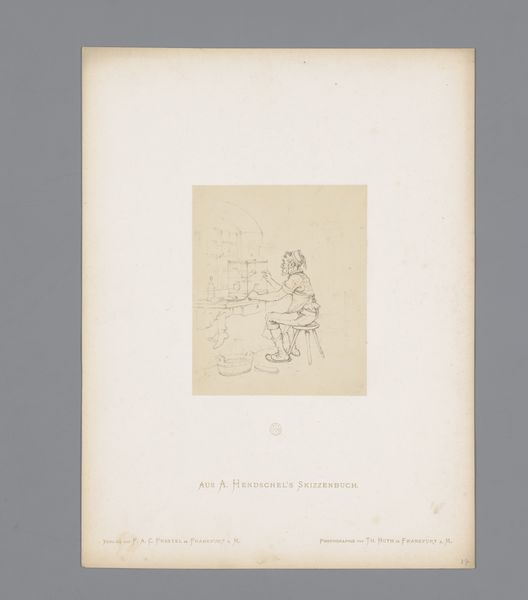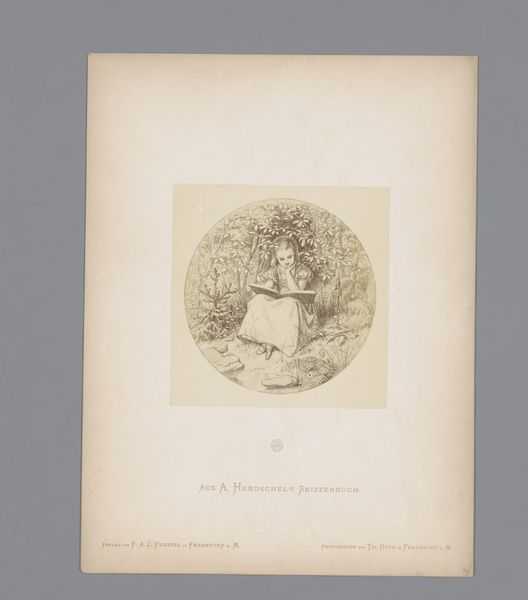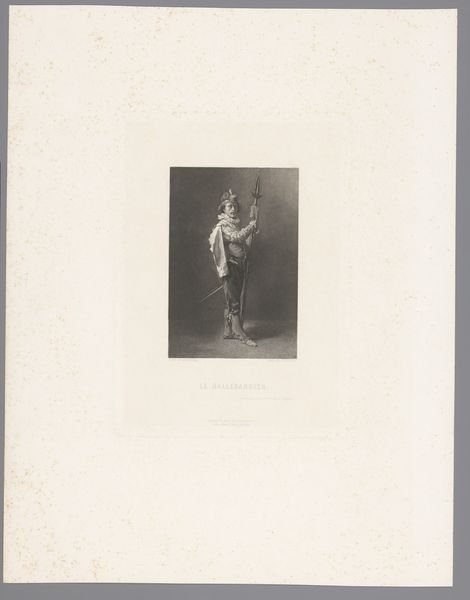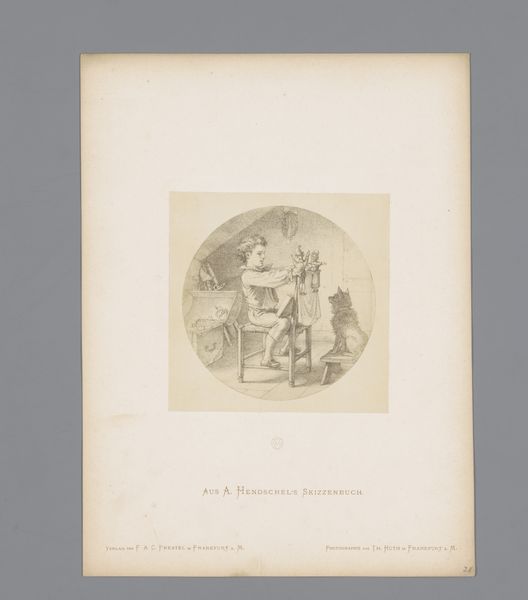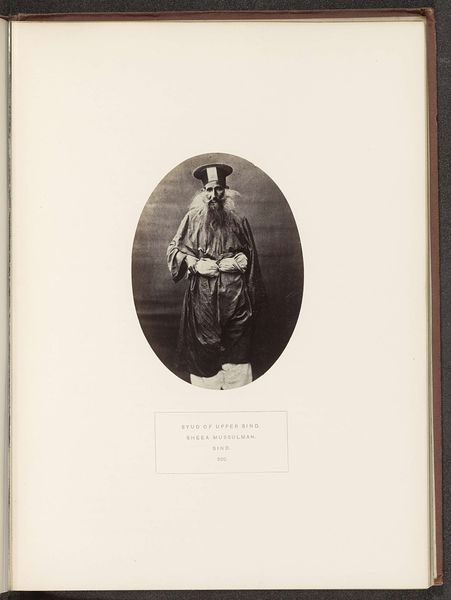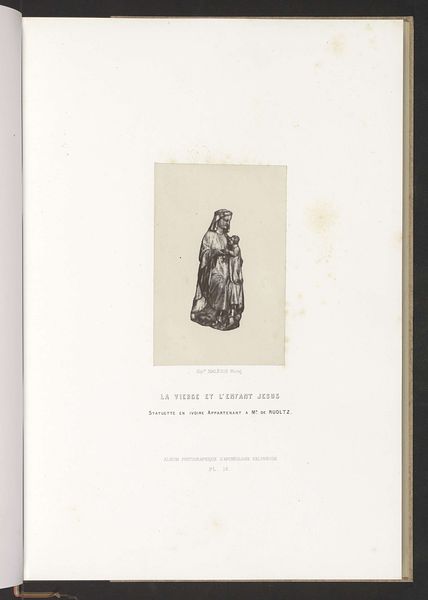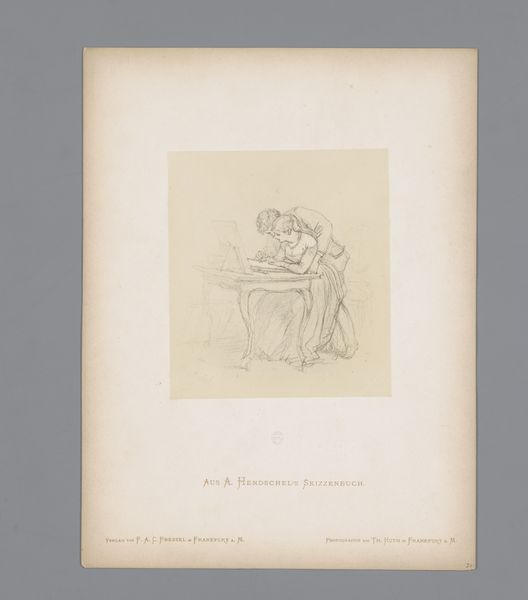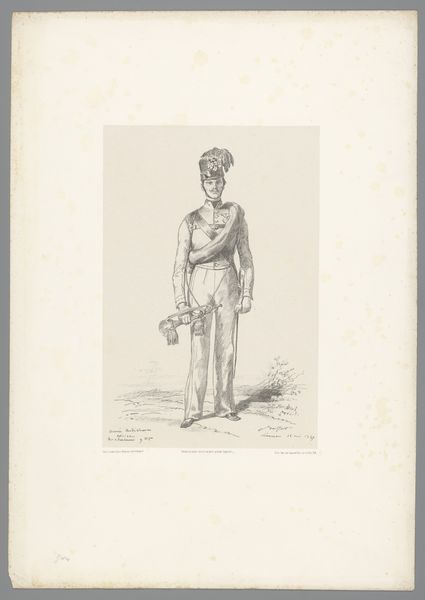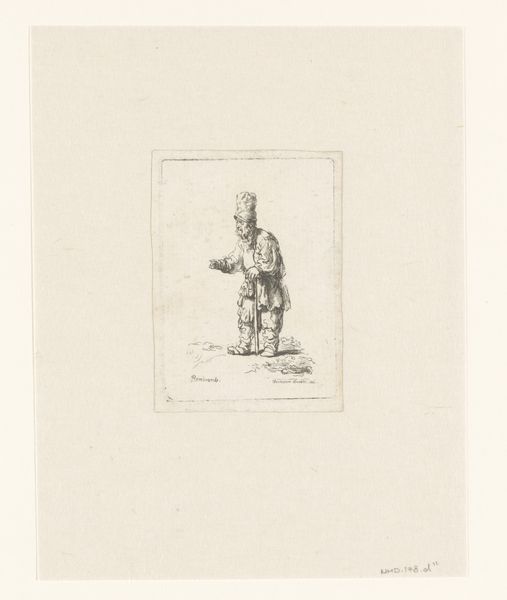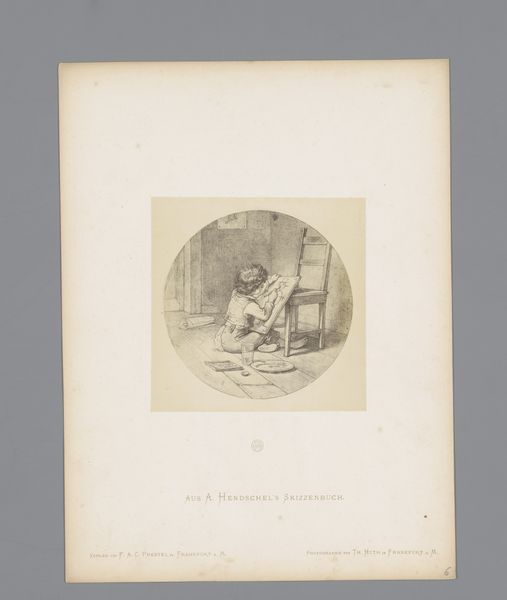
drawing, print, pencil
#
portrait
#
drawing
# print
#
pencil
#
history-painting
#
academic-art
Dimensions: height 122 mm, width 84 mm
Copyright: Rijks Museum: Open Domain
Curator: I find myself strangely drawn to this rather small photorealistic print, it’s entitled, "Fotoreproductie van een schets van een rabbijn door Albert Hendschel," which translates roughly to "Photoreproduction of a Sketch of a Rabbi by Albert Hendschel", created before 1870. Editor: Intriguing! The composition, although diminutive, has an undeniable presence. There's a captivating quality in the starkness of the monochromatic image and the artist’s hand that almost makes it feel like it transcends time. Curator: Hendschel was quite prolific. These prints would have made his images accessible. The historical context, particularly the evolving role of Jewish communities in 19th-century Europe, makes such depictions significant. How does it intersect with societal perceptions and integrate minority figures into the mainstream visual culture? Editor: Precisely. The very choice of rendering the figure as a drawing before creating a photoengraving raises questions. Did the artist want to emphasize the line work, perhaps highlighting particular features? Or maybe use academic lines to influence the interpretation of the Rabbi’s stance within the visual hierarchy of that time? Curator: It invites a crucial exploration. By focusing on a religious figure from a community experiencing fluctuating social standing, Hendschel positions his work, and subsequent printed photograph of that work, within a debate about inclusion and visibility. Was this intended as an act of respect, a candid snapshot, or something else entirely? Editor: I would be curious to do further analysis of the hat the Rabbi is wearing and how the interplay of dark and light creates a specific texture, drawing the eye to key aspects of his dress. There are deliberate compositional choices, for sure, in the relationship between line and tone that direct my reading of the figure and form. Curator: Perhaps the role of the Huth print production in shaping the modern perception and place of religious minorities requires deeper exploration. Thank you, this examination through our respective lenses allows a fuller appreciation for this piece. Editor: Yes, indeed, an intersection of visual language and societal undercurrents, frozen in time yet perpetually resonant.
Comments
No comments
Be the first to comment and join the conversation on the ultimate creative platform.
